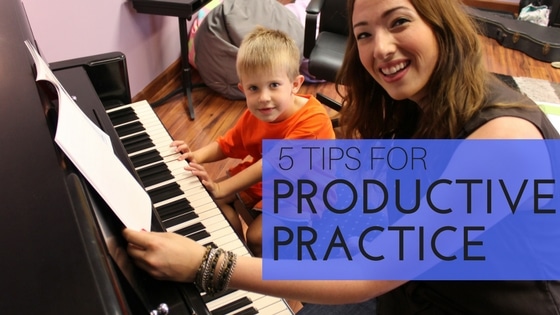Good practice habits are crucial to the development of music students. Most other activities have practice built in with multiple hours of training per week. Learning a musical instrument is unique in that a majority of practice happens at home away from the teacher. Therefore, parents are asked to help facilitate the practice sessions.
Here are a few tips to help students have productive practice time at home.
1. SET ASIDE A SPECIFIC TIME TO PRACTICE
I recently asked a few of my most diligent practicing students, “How do you go about practicing each week?” I heard the following responses:
- I practice before the bus comes to pick me up for school
- I practice every day when I get home from school after snack time
- Practicing is on my daily chores list
- Practicing is part of my homework assignments
- I have to practice before I am allowed to use electronics after school
Notice that each student has a specific regimen they follow to ensure they practice their musical instrument. Be proactive about setting aside practice time each day.
2. LOCATION IS IMPORTANT
Create a welcoming, clutter-free practice environment. Students practice space should be close to family and away from distractions.
- Practice space should be in a pleasing area of the home. Students will not want to practice if they need to go to the dingy basement or a part of the home where they feel separated from family. Keep it close to “the action” but not in the action!
- Find a place that doesn’t have too many distractions. Trying to practice next to a blaring television is difficult for a student (and makes for unhappy family members trying to watch their favorite show!)
3. QUALITY OVER QUANTITY
I often get asked, “How much time should my child be practicing?” Instead of focusing on time constraints, I suggest we focus on goals for the practice session.
- When practicing a part of the assignment, are there parts of the song or technical exercises that are harder than others? If so, slow them down. Lean into the harder parts. Instead of practicing the song 3X a session or for so many minutes, break it apart into smaller sections with a goal; e.g. “play measures 22-23 at 72 beats per minute 5 times without mistakes.”
- How do we know if certain parts of the song need more attention? Where did we have to slow down? Where did we hit wrong notes and need to start over? Assess. Think about the notes before playing them. Be thoughtful in practice, and don’t let autopilot take over.
- Double check to make sure all weekly assignment goals have been obtained.
4. PARENT INVOLVEMENT IS KEY TO LEARNING
Students spend less than 1% of their week with me. We cram a great deal of learning into our short window of time, but I need help to ensure practice happens at home. How can parents help their child progress each week?
- Students (especially younger ones) need you to sit along side them. Help them to understand their assignments, go through the music together and listen to the music they are making.
- Show them that music is valued in your home. Play music while making dinner. Listen to all genres of music. Take your student to live music events including choir and band concerts, musicals and theatrical productions, classical recitals, jazz clubs, rock shows, etc. Exposure to music can inspire your student by showing them what is capable with perseverance.
- Encourage them to practice. Practice is not always fun or easy, but celebrating the process of making music along with small triumphs along the way will boost your child’s enthusiasm.
- Attend studio recitals with excitement. Invite friends and family to attend and support your child’s musical growth.
- Create at-home concerts! Perhaps the concert is only for parents and siblings. Or maybe a small concert is given when the relatives come to visit. I have had students create recital programs to give out, perform the recital and even make post-recital treats for the attendees. Help them to take ownership of their learning and musicianship.
5. INSTRINSIC VERSES EXTRINSIC MOTIVATION
Some families choose to create practice incentives for their students. If they practice so many pieces, play for so many days in the month or pass through a certain book, they will receive a reward. This strategy has proven to work well especially with smaller children. Often families start with extrinsic motivation, but as students progress in their musical training and knowledge their intrinsic motivation takes over. They want to play a certain song they hear on the radio or they want to sound like their favorite musical artist. In later years of lessons students often long to become better musicians as it fills them with enjoyment, pride and self-confidence.
Remember that learning a musical instrument requires a parent/student/teacher triangle of communication and support to ensure the progress and success of lessons. Please reach out to your student’s instructor if you need any help, guidance or extra encouragement along the way. Practice definitely requires effort and attention, but observing the growth of your child’s musicianship is incredibly rewarding!

